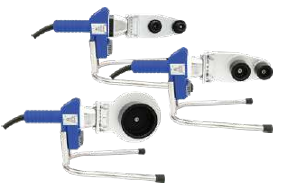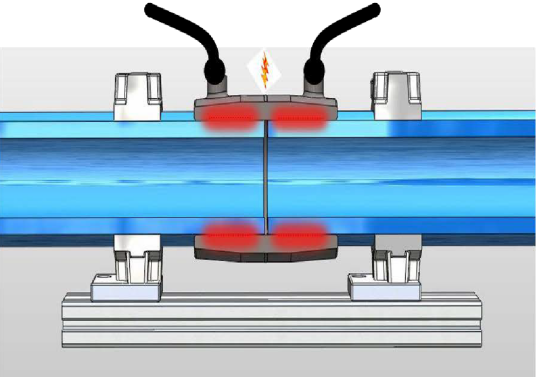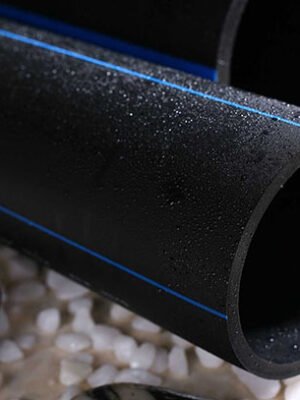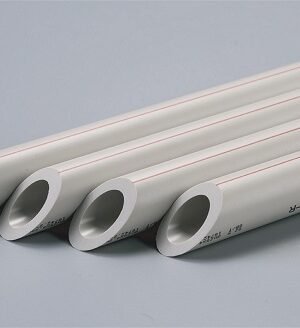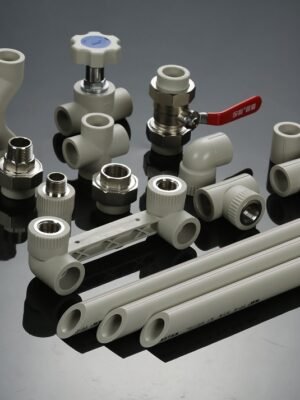High Density Polyethylene (HDPE)


HDPE Pipeline
POLYGON HDPE pipe is wildly used in 3 fields: water supply, water drainage and GSHP (ground source heat pump) system. And water drainage is divided into the same floor drainage and siphon drainage system.
Range of application
1. Urban water pipe network system
2.Sewer system for sewage discharge
3. Industrial raw material transportation pipeline system
4. Ore and mud conveying system
5. Landscaping pipe network system
6. Agricultural irrigation pipeline system
7. Old network reconstruction engineering system
HDPE Advantages
Good Hygienic Performance
POLYGON PE water supply pipeline only contains C and H elements, without any harmful components, the inner and outer surfaces are smooth, no scaling, no bacteria breeding, safety and health.
Good Flexibility
POLYGON PE water supply pipeline has good toughness, excellent impact resistance. It can resist uneven foundation settlement. It can be rolled in a coil and the laying distance is long at a time, which reduces the construction cost.
Reliable Connection
POLYGON PE has excellent weldability. The use of hot-melt or electric fusion connection makes the pipe and fittings become an integrated permanent connection, which greatly improves the reliability and safety of the system.
Long Service Life
POLYGON PE water supply pipeline is designed in strict accordance with relevant international standards. The service life is 50 years under the specified service conditions.
HDPE Socket Fusion Piping System
HDPE pipe is butt fused by applying heat to prepared pipe ends and then pushing the pipe ends together with a pre-determined force to make a permanent butt fusion joint. It is a very simple process utilizing a properly sized butt fusion machine for the pipe size to be joined.
HDPE Socket Fusion Piping System are durability, economical, and ecological advantages of HDPE piping system has resulted in the product being used for an increasing number of diverse applications in recent years. Coupled together with Fusion joint reliability, the system provides better assurance and leak-free performance. The socket fusion and electrofusion joining methods have become common and widely used especially for smaller pipe diameters. Flexible, reliable and affordable, Non-Leaching, UV Resistant Resistant to most Chemicals, Excellent to water hammer, Amazing Durability & High Versatility.
HDPE ELECTROFUSION PIPING SYSTEM
Electrofusion is a simple method of joining PE pipes in circumstances where butt fusion is not practicable. In addition to the jointing of line pipes using couplings this can be where fittings such as valves, elbows, and tees must be added. Prefabricated fittings are used, incorporating an electrical heating coil which melts the polyethylene of both the fitting and the pipe, causing them to fuse together when the material cools.
The characteristics of the fitting to be welded, such as the fusion time, are registered via a barcode on the fitting. An electrofusion control unit (ECU) supplies the electrical energy necessary to heat the coil. When the coil is energised, the material in the fitting adjacent to it melts and forms an expanding pool which comes into contact with the surface of the pipe. The continued heating causes the pipe surface to melt and a mixing of pipe melt and fitting melt takes place; this is vital to produce a good weld. Following the termination of the heat cycle, the fitting and the pipe are left to cool and the melted material solidifies to form a sound joint.
Hot and cold zones, sometimes called fusion and freeze zones or a combination of the two names, are formed after energising the coil. The length of these zones is particularly important. Each zone ensures that fusion is controlled to a precise length of the fitting socket and that sufficient melt pressure is generated and applied throughout the jointing process. The precisely controlled pitch and positioning of the coil in relation to the inner surface of the socket ensures uniform heat distribution.
The basic fusion parameters: temperature, pressure and time, are controlled by the ECU which is programmed to establish these parameters from the barcode read from the fitting itself. The ECU also provides a permanent record of the procedure followed.
How to ensure effective electrofusion
Pipes that are distorted or that have taken on an oval shape need to be rerounded to ensure that they will fit in the electrofusion fitting and that the annulus between the pipe and socket is the same all the way round. In the case of large diameter pipes this may require the use of hydraulic rerounding equipment. For small and medium diameters, the restraining and alignment clamps that are used to hold the pipes in place during the electrofusion process are normally sufficient for the rerounding of the pipes to the required degree.
The entire pipe surface that will be inserted into the electrofusion fitting must be peeled or scraped with an appropriate tool, as recommended by the fitting manufacturer. It is strongly preferred that a peeling tool is used rather than a hand scraper, as this ensures that all of the pipe surface is removed to a depth of approximately 0.2 mm. This is sufficient to remove any oxidised, dirty or contaminated material. Whilst more time consuming to use than hand scrapers, pipe peelers provide a far more consistent removal of the pipe surface that is to undergo electrofusion. Hand scrapers are however useful for the end preparation of the pipes. Other equipment such as metal files, rasps, emery or sand paper should not be used.
After peeling, the peeled surface must be wiped with an authorised Isopropanol impregnated pipe wipe, as recommended by the pipe or fitting manufacturer, to remove any dust residue. Methylated spirits, acetone, methyl ethyl ketone (MEK) or other solvents should not be used for wiping the scraped surface as they can leave a residue that will interfere with the fusion process. The prepared surfaces must be completely dry before proceeding.
The electrofusion fittings themselves should remain within their protective airtight plastic packaging until just before the prepared pipes are to be inserted in to the fitting. This is to prevent any contamination of the fusion surface. If the interior of the internal surface of the fitting should somehow be contaminated, it should be thoroughly cleaned with Isopropanol impregnated pipe wipes and left to dry prior to the pipes being inserted.
As the name suggests, such clamps are used to ensure that the pipes and electrofusion fitting are all correctly aligned prior to commencing the fusion process and are then firmly held in that position until the end of the complete fusion process. Whilst the ECU can be carefully disconnected from the fitting once the heating phase of the process is complete, the clamps must remain in place until the end of the cooling phase. This is to ensure that the polyethylene that was melted during the heating phase has cooled and set hard within the fitting. At the end of the heating phase, the ECU should inform the operator of the required cooling time. Alternatively the cooling time should be either marked on the fitting or given in the documentation that comes with the fitting.
The resulting joint, when properly made, is at least as strong as the original pipe and can withstand all the loads applied during routine installation and operation.


